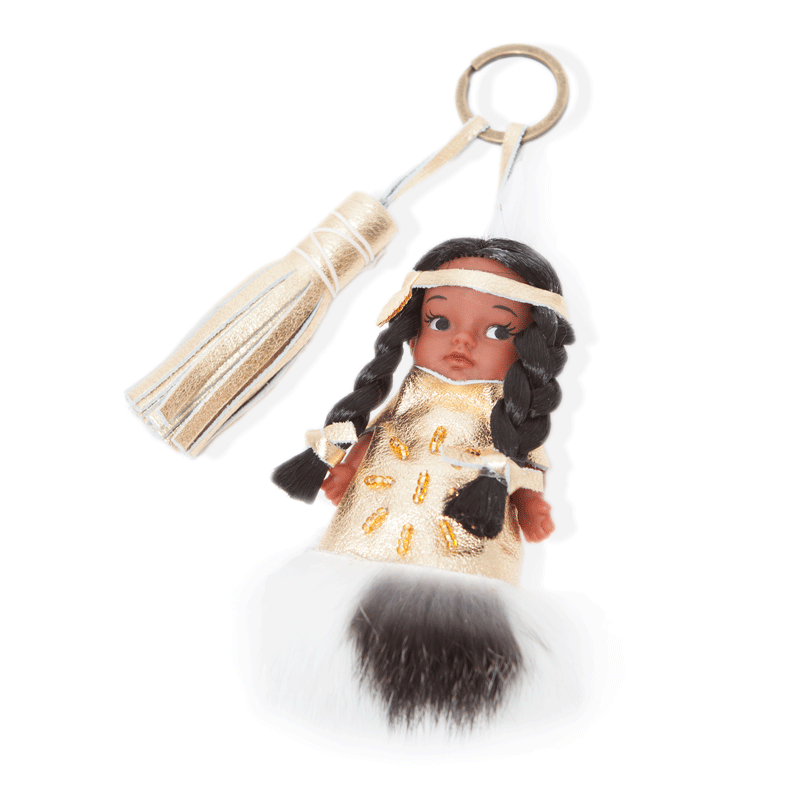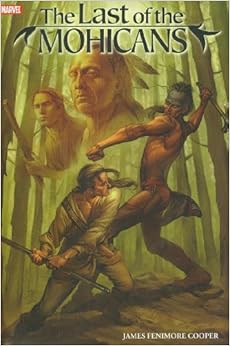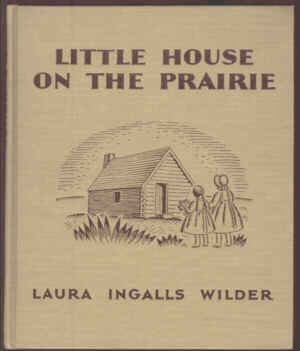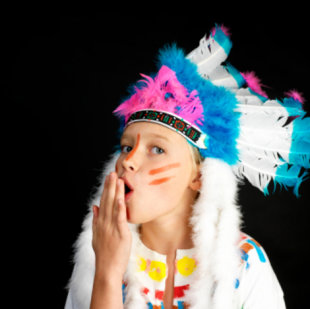Ireland Baldwin Defends Her Native American Halloween Costume


— ireland (@IrelandBBaldwin) October 29, 2013
Ok everyone. I apologize if my Halloween costume offended you and your culture PERSONALLY. However, I don't apologize to a majority...
... Of you who thought it was necessary to return the favor with a lot of hateful mentions.
A Native American costume was AN OPTION at a Halloween store.
I respect all cultures and I would never mock one. I am Cherokee Indian and I am also well aware of what many tribes encountered in the past
And for some of you pathetic morons to bring my family and other matters into the discussion, you are all sad excuses for human beings
Commenters respond
Some Jezebel commenters responded directly to Baldwin's claims:
Seriously, if you are basing the racial appropriateness of stuff off of Disney cartoons, sorry kiddo, but Disney cartoons are racist as fuck and still have a hard time with race.
When she grows out of her teenage sociopathy she will regret that entire tirade. I like that she hit just about every square on the "Racist Apologist Bingo" card. Brava, kid.
Is it me or are we seeing a LOT of privileged, white, pretty, blond girls going absolutely INSANE this Halloween with the black/brown face and getting REAL huffy when called out on it? I'm getting the distinct impression they feel entitled to do whatever they want due to aforementioned blond whiteness. It's giving me rageface because I'm also seeing a shit ton of feminists defending them. Intersectionality, time to embrace that already and not put up with this bs.
You know, there were/are a LOT of different tribes. Isn't it amazing how every single clueless white person always claims to be Cherokee?
Ireland Baldwin, you cannot claim you are part Native American in order to justify your racism, whether you really are or not. I am part African (in my ancestry for real, but am as white as skim milk) but am not using that as an excuse to do racist shit.
She's part Cherokee? Kim Basinger's Wikipedia states that she might be part Cherokee. But how convenient for Ireland Baldwin to bust that "fact" out.
You would be shocked how many people I've encountered outside of the midwest who did not know Native Americans still exist, as if they just perished or something. I get the feeling a lot of people who put on redface do so with the assumption that there are no Natives alive to take offense.
There are many, many more who DO know and just don't care.
For what it's worth, I'm 35, from the East coast, and have met exactly one person who I knew to be primarily Native American. It doesn't excuse Ireland's stupidity, but I think you're right that she probably had no reference point for modern real-life native Americans.
Claiming to be Cherokee to justify an Indian chief or Pocahottie costume = claiming to be German to justify a Scottish kilt or Greek toga.
There's a glaring contradiction in the above assertions. If Baldwin is Cherokee as she claims, what is she doing in a stereotypical Plains-style costume? If she has no reference point for Natives, why is she claiming to be Cherokee?
If you're an Indian, that doesn't give you a licence to wear whatever you want and claim it's authentic. Just the opposite: It behooves you, more than anyone, to get the costume right. To wear something that's culturally correct, not a stupid stereotype.
More coverage
Other websites reported on the controversy, depicting Baldwin as defiant:
Ireland Baldwin Defends Native American Halloween Costume: “I Am Cherokee Indian” (PHOTOS)
Ireland Baldwin Dons Native American Halloween Costume, Lashes Out at "Pathetic" Critics
Or contrite:
Kim Basinger--Ireland Baldwin Apologises Over Native Indian Halloween Costume
'I made a mistake and I apologize': Ireland Baldwin responds to backlash after Native American Halloween costume causes Twitter uproar
'People make mistakes, everyone. I made a mistake and I apologize if it offended,' Ireland wrote on October 30, before addressing individual @Buri103, explaining, 'I copied a Disney character and I'm sorry that it offended you.'
On Thursday, the star managed to make light of the situation, tweeting, 'Before I dress as Wednesday Addams and Juno Macguff this weekend, is anyone offended?'





























